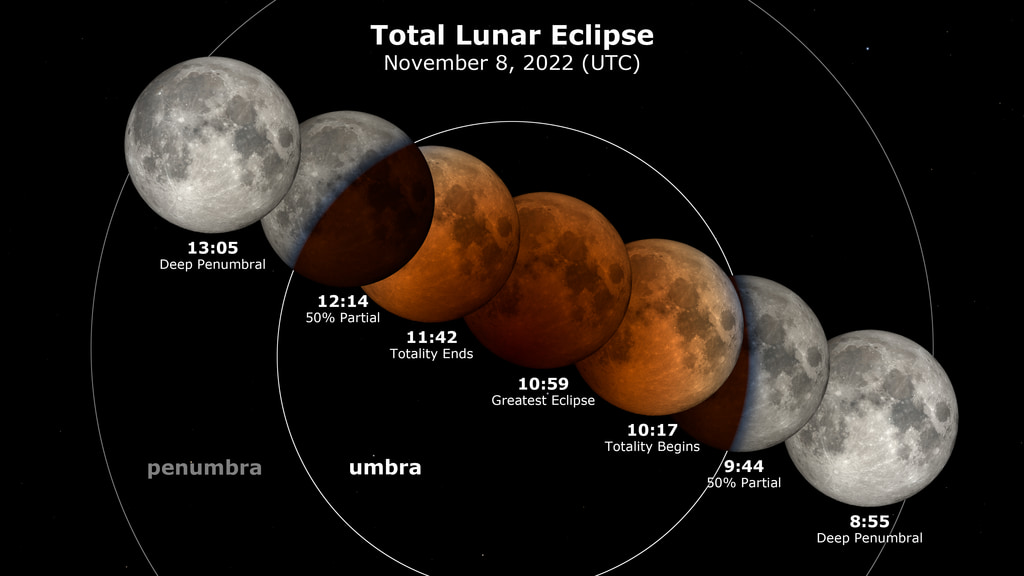Viewing the Lunar Eclipse in the Early Hours on Tuesday, Nov. 8
Posted
Last Updated
By Nasa
What’s special about November’s lunar eclipse?
The last total lunar eclipse for three years will occur on November 8, 2022, with the next occurring on March 14, 2025 — though we will continue to see partial and penumbral lunar eclipses during that time.
A lunar eclipse occurs when the Sun, Earth, and Moon align so that the Moon passes into Earth’s shadow. In a total lunar eclipse, the entire Moon falls within the darkest part of Earth’s shadow, called the umbra. When the Moon is within the umbra, it will turn a reddish hue. Lunar eclipses are sometimes called “Blood Moons” because of this phenomenon.
How can I observe the eclipse?
You don’t need any special equipment to observe a lunar eclipse, although binoculars or a telescope will enhance the view and the red color. A dark environment away from bright lights makes for the best viewing conditions.
Totality ― the stage of the eclipse where the Moon is entirely in Earth’s shadow ― will be visible across North and Central America and in Ecuador, Colombia, and western portions of Venezuela and Peru. In Puerto Rico, the Moon sets just after totality begins. The eclipse is also visible in Asia, Australia, and New Zealand. Viewers in Alaska and Hawaii will have the opportunity to see every stage of the eclipse.
READ MORE at https://moon.nasa.gov/news/185/what-you-need-to-know-about-the-lunar-eclipse/

